
Ulcinj: The Jewel of Montenegro's Adriatic Coast
Discover Ulcinj, Montenegro's coastal gem, where history meets breathtaking beaches and vibrant culture. Explore ancient streets, pristine sands, and culinary delights.
Nestled on the Adriatic coast, Ulcinj is a hidden gem in Montenegro, known for its rich history, stunning beaches, and vibrant culture. With a history spanning over 2,000 years, Ulcinj offers a unique blend of ancient and modern attractions. The Old Town, with its narrow cobblestone streets and well-preserved medieval architecture, provides a glimpse into the city's storied past. Don't miss the Ulcinj Castle, which offers panoramic views of the sea and the city below. Ulcinj is also famous for its pristine beaches. The most popular is Velika Plaza, a 12-kilometer stretch of sandy paradise perfect for sunbathing, swimming, and water sports. Ada Bojana, an island formed at the mouth of the Bojana River, is another must-visit spot, known for its natural beauty and excellent conditions for kite surfing. Cultural enthusiasts will enjoy exploring the city's many mosques, churches, and museums. The Ulcinj Museum, located in a former church, houses a collection of artifacts that tell the story of the city's diverse cultural heritage. The town's vibrant marketplace is a great place to experience local life, with stalls selling everything from fresh produce to handmade crafts. When it comes to dining, Ulcinj offers a variety of options that reflect its multicultural influences. From fresh seafood to traditional Montenegrin dishes, there's something to satisfy every palate. Don't forget to try the local olive oil, which is renowned for its quality and flavor.
Local tips in Ulcinj
- Visit the Old Town early in the morning to avoid the crowds and enjoy the serene atmosphere.
- Bring comfortable walking shoes for exploring the cobblestone streets and hilly areas.
- Check the local calendar for festivals and events to experience Ulcinj's rich cultural scene.
- Don't miss the sunset from the Ulcinj Castle for an unforgettable view.
- Rent a bike to explore the beaches and nearby nature reserves at your own pace.
- Learn a few basic phrases in Montenegrin to enhance your interactions with locals.
Ulcinj: The Jewel of Montenegro's Adriatic Coast
Nestled on the Adriatic coast, Ulcinj is a hidden gem in Montenegro, known for its rich history, stunning beaches, and vibrant culture. With a history spanning over 2,000 years, Ulcinj offers a unique blend of ancient and modern attractions. The Old Town, with its narrow cobblestone streets and well-preserved medieval architecture, provides a glimpse into the city's storied past. Don't miss the Ulcinj Castle, which offers panoramic views of the sea and the city below. Ulcinj is also famous for its pristine beaches. The most popular is Velika Plaza, a 12-kilometer stretch of sandy paradise perfect for sunbathing, swimming, and water sports. Ada Bojana, an island formed at the mouth of the Bojana River, is another must-visit spot, known for its natural beauty and excellent conditions for kite surfing. Cultural enthusiasts will enjoy exploring the city's many mosques, churches, and museums. The Ulcinj Museum, located in a former church, houses a collection of artifacts that tell the story of the city's diverse cultural heritage. The town's vibrant marketplace is a great place to experience local life, with stalls selling everything from fresh produce to handmade crafts. When it comes to dining, Ulcinj offers a variety of options that reflect its multicultural influences. From fresh seafood to traditional Montenegrin dishes, there's something to satisfy every palate. Don't forget to try the local olive oil, which is renowned for its quality and flavor.
When is the best time to go to Ulcinj?
Iconic landmarks you can’t miss
Long Beach
Experience the breathtaking beauty and vibrant culture of Long Beach, Montenegro, a perfect coastal paradise for relaxation and adventure.
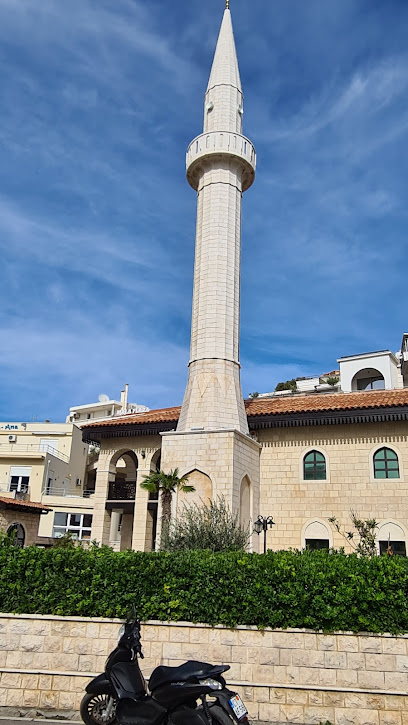
Miami Beach
Experience the vibrant culture, stunning beaches, and lively atmosphere of Miami Beach – a must-visit destination for sun-seeking travelers.
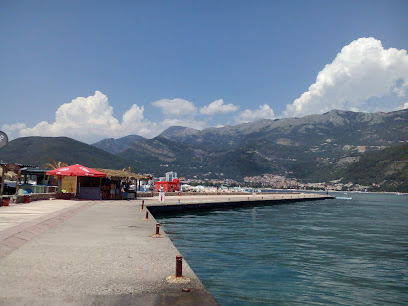
Valdanos beach
Experience the stunning beauty of Valdanos Beach, where crystal-clear waters meet golden sands and lush landscapes in Montenegro.
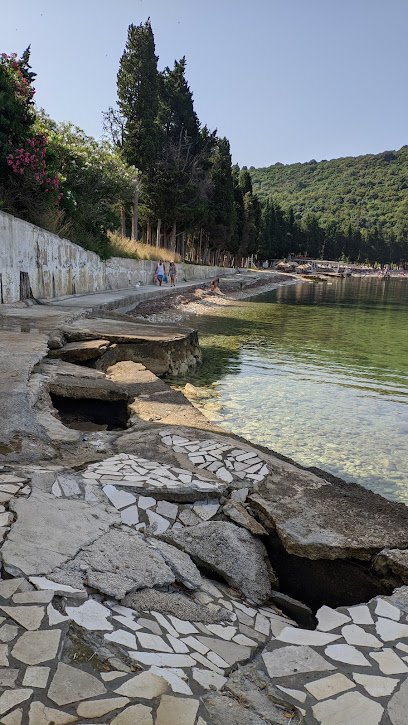
Museum of Local History in Ulcinj
Discover Ulcinj's diverse cultural heritage at the Museum of Local History, where history comes alive through fascinating exhibits and artifacts.
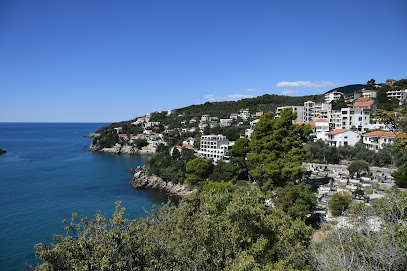
Small Beach
Experience the beauty of Small Beach, a serene escape on Montenegro's coastline, perfect for relaxation, sunbathing, and swimming in crystal-clear waters.
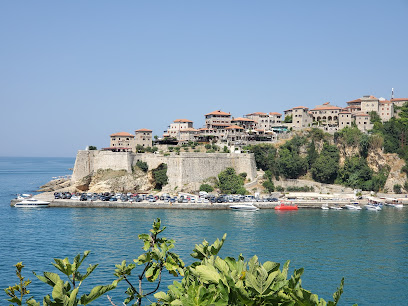
Valdanos
Experience the tranquility of Valdanos Beach, a serene coastal haven in Montenegro, perfect for relaxation and adventure amidst stunning natural beauty.
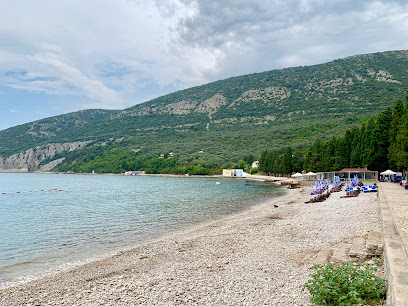
Kristalna Plaža
Discover the beauty of Kristalna Plaža, Montenegro's idyllic beach pavilion, where sun-soaked relaxation meets vibrant local culture.
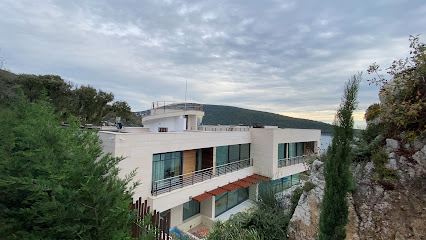
IL Galeone
Experience the finest Mediterranean cuisine with stunning views at IL Galeone, a must-visit restaurant in Ulcinj, Montenegro.
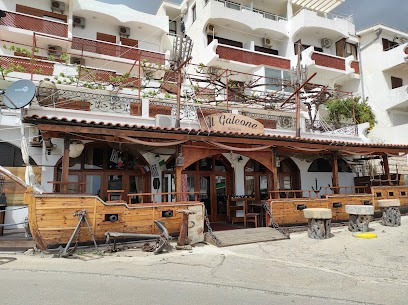
Ladies Beach Dada
Ladies Beach Dada in Ulcinj, Montenegro: A stunning beach pavilion offering relaxation, vibrant atmosphere, and breathtaking coastal views for every traveler.
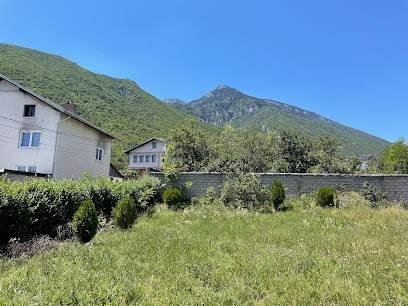
Apartments Eneida
Experience the perfect blend of comfort and relaxation at Apartments Eneida, your serene retreat in Ulcinj, Montenegro.

Aquarius White Beach
Discover the tranquility of Aquarius White Beach, a pristine coastal gem in Montenegro perfect for sunbathing, swimming, and savoring local delights.

Hotel Palata Venezia
Discover the perfect blend of luxury and history at Hotel Palata Venezia, nestled in the charming old town of Ulcinj, Montenegro.
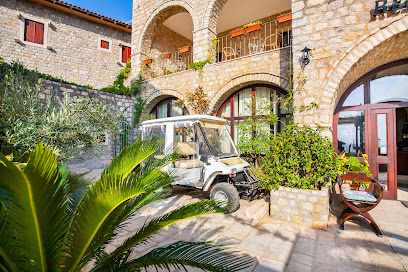
Pirate Backpackers
Experience the vibrant culture and warm hospitality of Ulcinj at Pirate Backpackers, your ultimate hostel destination in Montenegro.
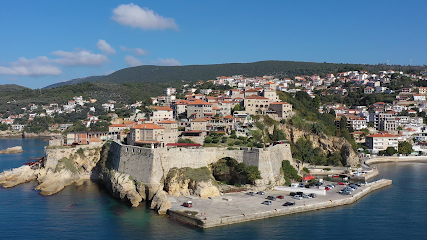
Ulcinj Old Town
Explore the enchanting Ulcinj Old Town, where history meets breathtaking coastal views in Montenegro's hidden gem.
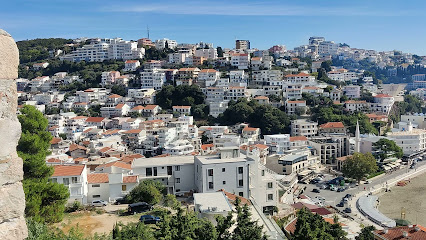
Ke Muji
Experience the authentic flavors of Montenegro at Ke Muji, a top-rated restaurant in Ulcinj, perfect for food lovers and adventurers alike.

Unmissable attractions to see
Fortress Old Bar
Discover the rich history and stunning views at Fortress Old Bar, a captivating historical site in Montenegro that enchants every visitor.
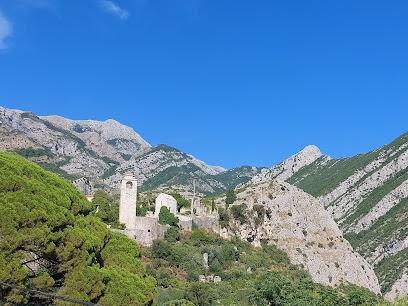
Rozafa Castle
Experience the breathtaking views and rich history at Rozafa Castle, a majestic fortress in Shkodër, Albania, steeped in legend and allure.
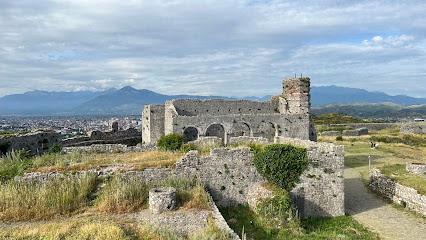
Beach Luchice
Discover Beach Luchice in Petrovac, Montenegro: a serene public beach with stunning views, crystal-clear waters, and a perfect blend of relaxation and adventure.
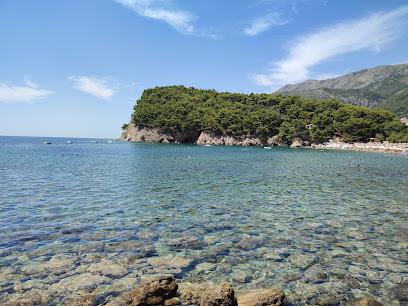
Pavlova Strana Rijeka Crnojeviča Viewpoint
Explore the stunning vistas from Pavlova Strana Rijeka Crnojevića Viewpoint, where nature's beauty meets serene tranquility.
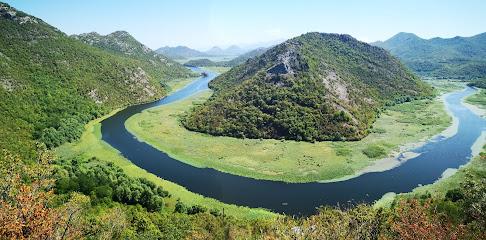
Petrovac beach
Explore the enchanting Petrovac Beach in Montenegro, a serene coastal retreat featuring stunning landscapes and delightful local cuisine.

Mesi Bridge
Discover the breathtaking Mesi Bridge in Albania, an architectural gem that beautifully connects history and nature amidst stunning landscapes.
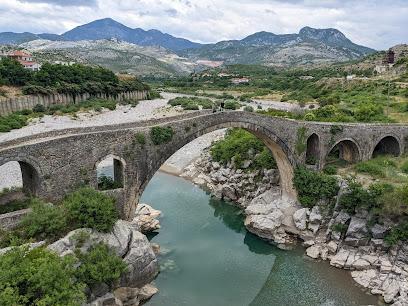
Old Town Bar
Explore the ancient ruins and vibrant culture of Old Town Bar, a historical treasure on Montenegro's stunning Adriatic coast.
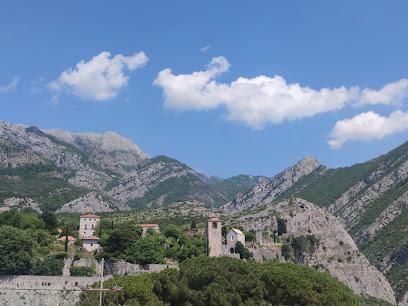
Kamenovo beach
Discover the tranquil beauty of Kamenovo Beach in Montenegro, a coastal paradise with golden sands, crystal-clear waters, and vibrant local culture.
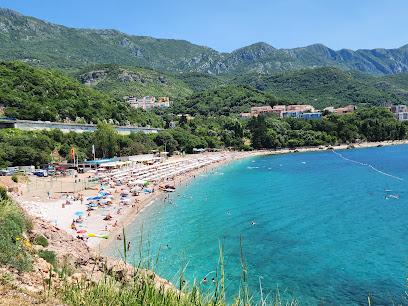
Sveti Stefan Beach
Explore the stunning Sveti Stefan Beach in Montenegro, where golden sands and clear waters meet rich cultural heritage and breathtaking views.
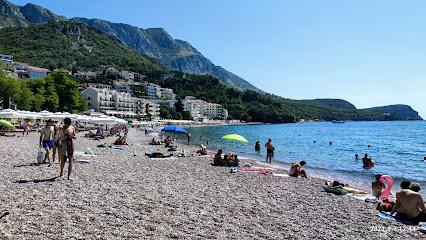
The Church of Sveti Ivan (St. John)
Discover the enchanting Church of Sveti Ivan in Budva, a historical landmark that showcases Montenegro's rich cultural heritage and stunning architecture.
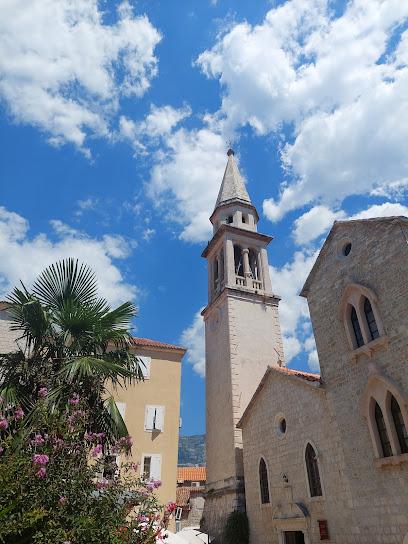
Becici beach
Discover the vibrant charm of Becici Beach in Montenegro, where golden sands meet crystal-clear waters for an unforgettable coastal escape.
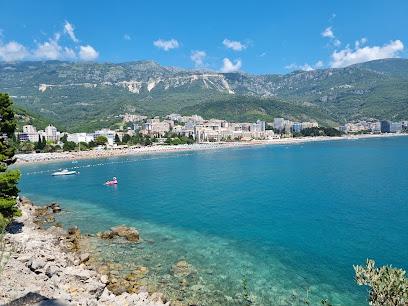
Manastir Reževići
Explore the serene beauty and rich history of Manastir Rezevici, a captivating monastery in the heart of Montenegro’s picturesque landscape.
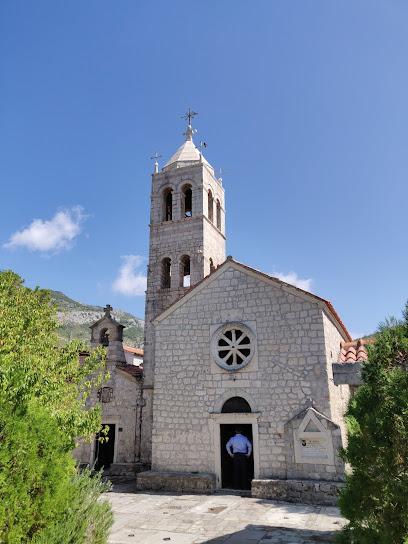
Ada Bojana
Experience the untouched beauty of Ada Bojana, Montenegro's hidden gem, offering pristine beaches, vibrant nature, and rich cultural experiences.

Fort Mogren
Discover the majestic Fort Mogren in Budva, Montenegro, where history meets stunning coastal views in a breathtaking setting.

Marubi National Museum of Photography.
Explore the Marubi National Museum of Photography in Shkodër, Albania, showcasing a rich collection of photographic art and cultural heritage.
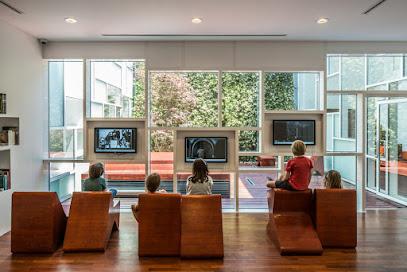
Essential places to dine
Restaurant Lovac (Since 1928)
Experience the rich flavors of Montenegro at Restaurant Lovac - a culinary treasure serving seafood and traditional dishes since 1928.
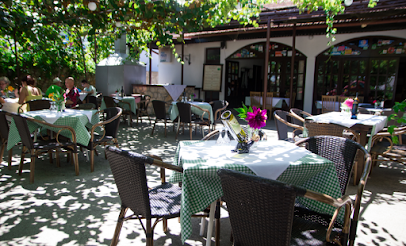
Restaurant Antigona
Discover exceptional Mediterranean cuisine at Restaurant Antigona in Ulcinj, where stunning coastal views meet delightful flavors.

Restaurant Dulcinea Since 1984
Experience authentic Montenegrin cuisine at Restaurant Dulcinea in Ulcinj – where tradition meets taste in every dish.

Restaurant Dulcinea
Discover authentic Montenegrin flavors at Restaurant Dulcinea in Ulcinj, where stunning views meet exceptional cuisine.

LA TAVOLA - Steakhouse & Pizzeria
Experience the best of steak and pizza at La Tavola in Ulcinj - where culinary tradition meets modern taste.
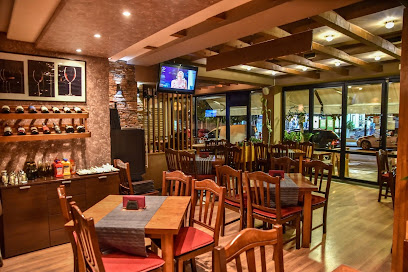
Higo Restaurant & Lounge
Discover exquisite Montenegrin flavors at Higo Restaurant & Lounge in Ulcinj - where culinary artistry meets vibrant ambiance.
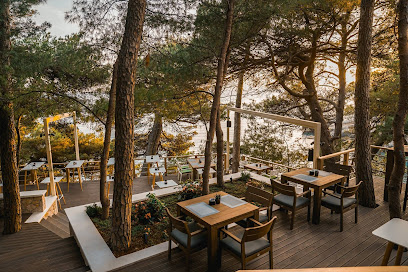
La Guitarra
Discover La Guitarra in Ulcinj – where exquisite Mediterranean flavors meet warm hospitality in an enchanting setting.
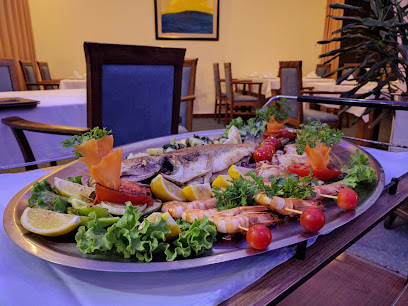
Restaurant Fisherman Hari
Discover authentic Montenegrin seafood at Restaurant Fisherman Hari in Ulcinj – where every dish tells a story.
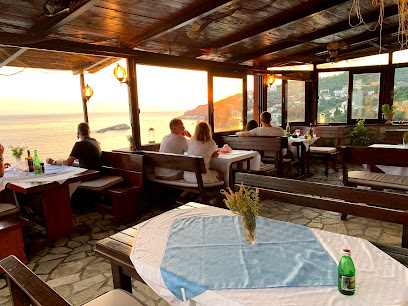
Konoba Barutana
Experience authentic Mediterranean flavors at Konoba Barutana in Ulcinj, where every dish tells a story of Montenegro's rich culinary heritage.
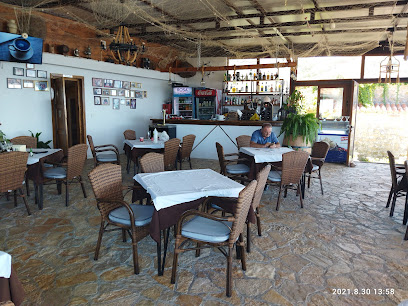
Restaurant Taphana
Experience authentic Montenegrin cuisine at Restaurant Taphana in Ulcinj's picturesque old town.
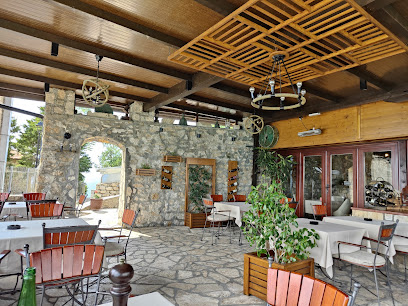
Castello Restaurant & Bar
Savor the authentic flavors of Montenegro at Castello Restaurant & Bar in Ulcinj – where every meal is a delightful experience.
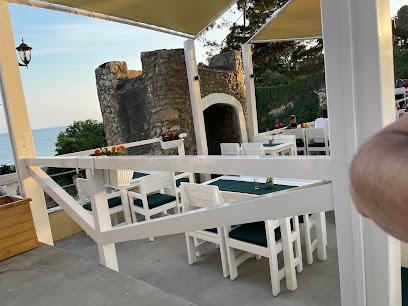
IL Galeone
Discover IL Galeone: A premier restaurant in Ulcinj serving exquisite Mediterranean dishes made from fresh local ingredients.
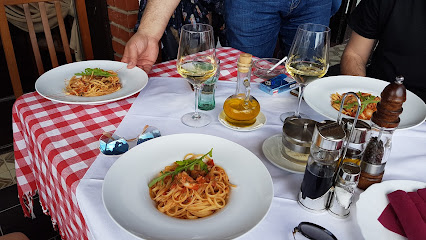
Restaurant Teuta
Experience authentic Montenegrin cuisine at Restaurant Teuta in Ulcinj – where local flavors meet stunning coastal views.
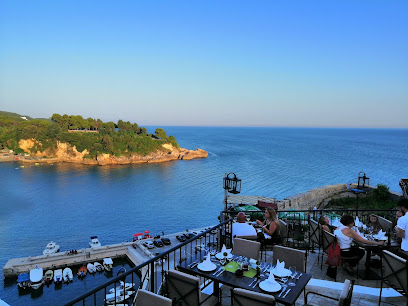
Restaurant Bella Vista
Discover the flavors of Montenegro at Restaurant Bella Vista – where exquisite cuisine meets breathtaking views along the Adriatic coast.
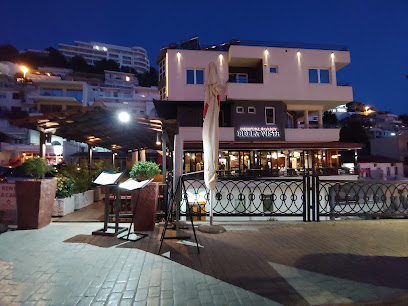
Terra Promessa Restaurant
Experience exquisite Mediterranean cuisine and breathtaking views at Terra Promessa Restaurant in Ulcinj, Montenegro.
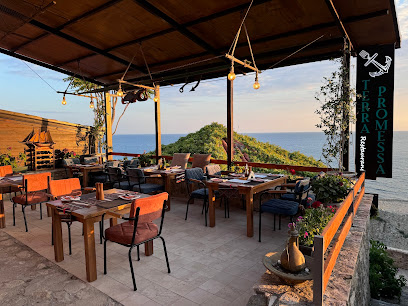
Markets, malls and hidden boutiques
Cungu&Co
Discover the best shopping experience in Ulcinj at Cungu&Co, featuring diverse stores, great dining, and a family-friendly atmosphere.
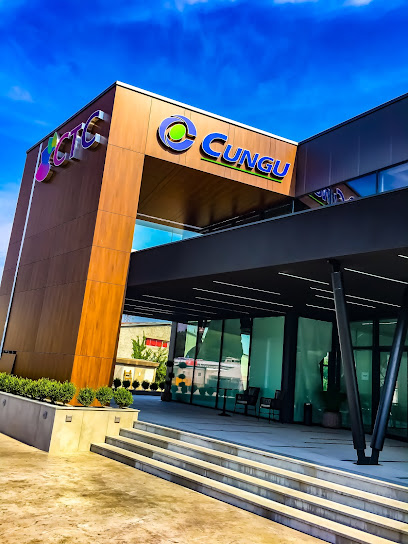
INTERSPORT Ulcinj
Discover quality sporting goods and gear up for your adventures at INTERSPORT Ulcinj, your ultimate stop for sports equipment in Montenegro.
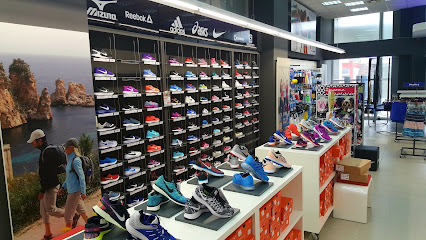
iDEA
Discover an extensive selection of local and international products at iDEA grocery store in Ulcinj, perfect for all your culinary adventures.
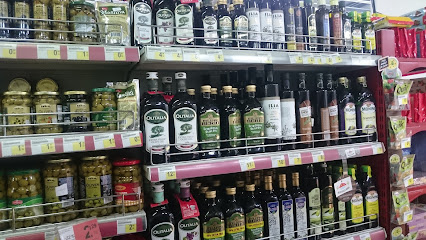
Natural Products Linda
Explore the charm of Montenegro at Natural Products Linda, where authentic souvenirs meet sustainable craftsmanship in Ulcinj.
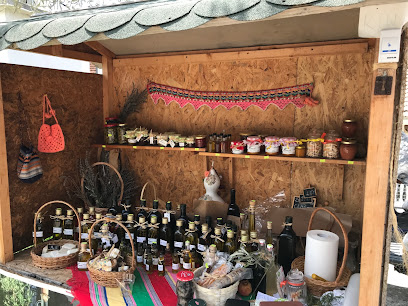
Concordia Commerce
Discover the vibrant shopping experience at Concordia Commerce in Ulcinj, featuring local and international brands, exquisite dining, and a lively atmosphere.
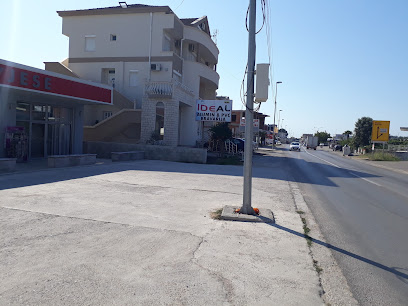
CTC Shopping center
Explore the CTC Shopping Center in Ulcinj for a unique shopping experience, blending local charm with international brands and delicious dining options.
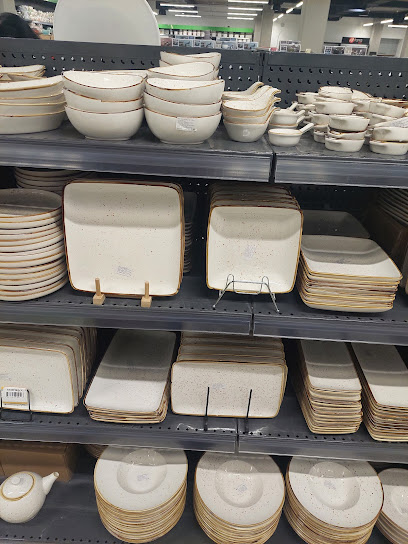
JOOP! Butik
Experience the vibrant shopping atmosphere at JOOP! Butik in Ulcinj, offering a delightful mix of local and international fashion brands.
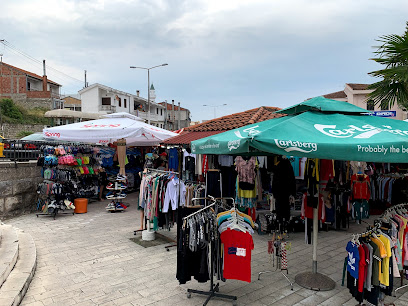
Lali Commerce
Discover exquisite furniture and local craftsmanship at Lali Commerce in Ulcinj, Montenegro – a must-visit for decor enthusiasts.
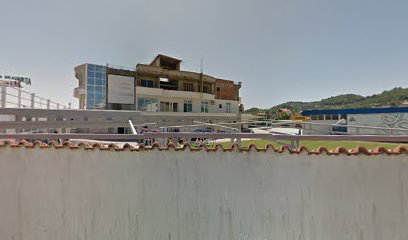
Top Shop Ulcinj
Experience the vibrant shopping scene at Top Shop Ulcinj, where local culture meets contemporary style in the heart of Montenegro.
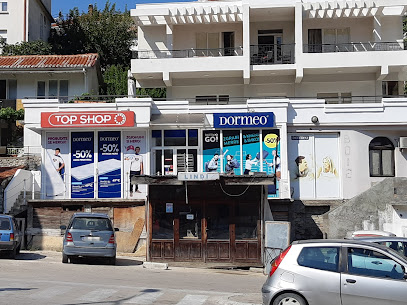
Surf Shop Ulcinj
Discover the ultimate surf shop in Ulcinj, Montenegro, offering premium gear and stylish beachwear for your coastal adventures.
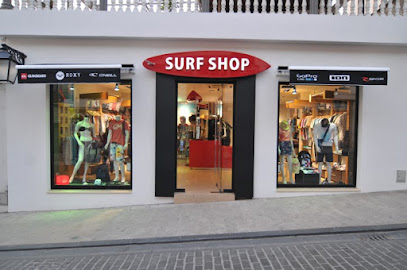
Bonanza watch&jewelry store
Discover exquisite watches and jewelry at Bonanza Watch & Jewelry Store in Ulcinj, Montenegro, where elegance meets quality and fair prices.

Our Flower Shop
Explore the vibrant floral treasures of Our Flower Shop in Ulcinj, where beauty and freshness bloom in every arrangement.
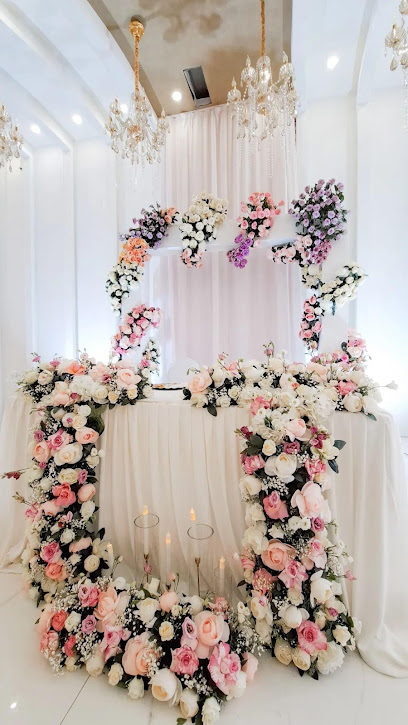
T-shirt & souvenir shop
Discover the charm of Ulcinj through its unique souvenir shop, where Montenegrin culture meets memorable keepsakes.
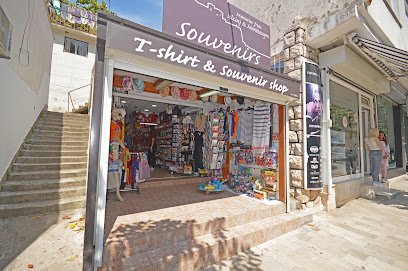
Jadran market
Experience the vibrant local culture at Jadran Market in Ulcinj, where fresh produce and traditional goods await every traveler.
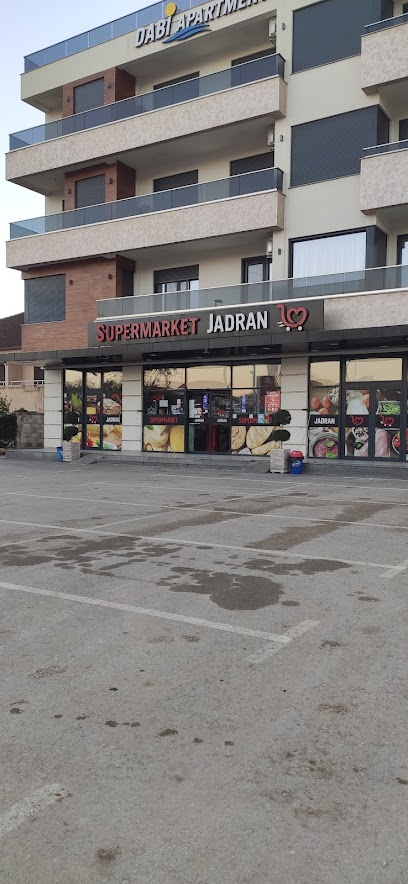
NEW YORKER
Dive into fashion at NEW YORKER in Ulcinj, where you'll find the latest trends in clothing and accessories for every taste and occasion.
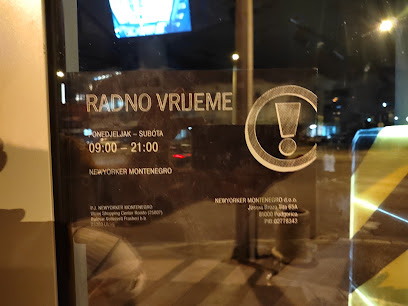
Essential bars & hidden hideouts
Mojito Beach
Discover Mojito Beach, a vibrant bar and restaurant on Velika Plaza, where stunning sea views, delicious cuisine, and refreshing cocktails await you.
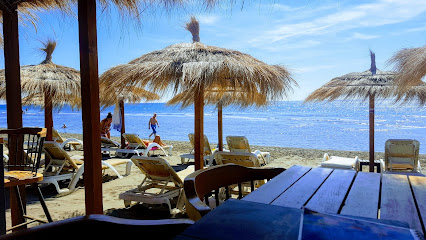
Higo Restaurant & Lounge
Experience the best of Montenegrin and international cuisine at Higo Restaurant & Lounge in Ulcinj, where every meal is a feast for the senses.
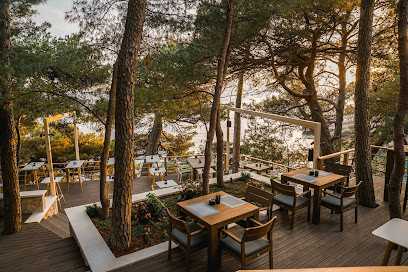
Castello Restaurant & Bar
Discover the flavors of Montenegro at Castello Restaurant & Bar, where local cuisine meets stunning coastal views for an unforgettable dining experience.
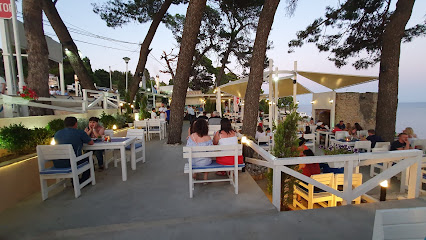
Beach Bar
Experience the vibrant Beach Bar in Ulcinj, where sun, sea, and signature cocktails create unforgettable seaside moments.
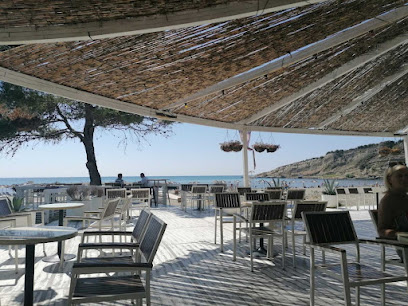
Kino cafe
Experience the vibrant atmosphere and delightful beverages at Kino Cafe, a cozy lounge in the heart of Ulcinj, Montenegro.
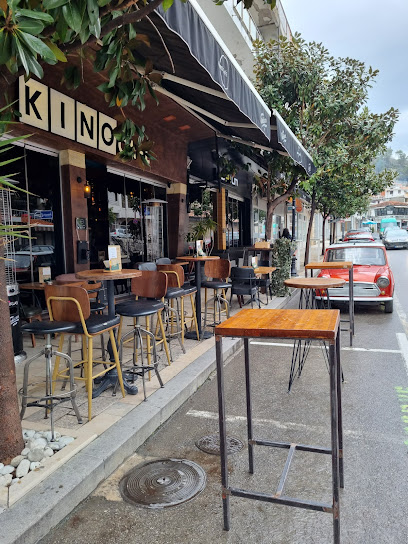
Ribarska Konoba
Experience authentic Montenegrin cuisine at Ribarska Konoba, a scenic restaurant along the Adriatic coast in Ulcinj, perfect for seafood lovers.
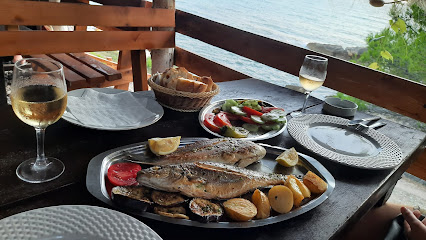
Beach Bar Lido
Discover the coastal charm of Beach Bar Lido in Ulcinj, Montenegro, where refreshing drinks and stunning views of the Adriatic Sea await.
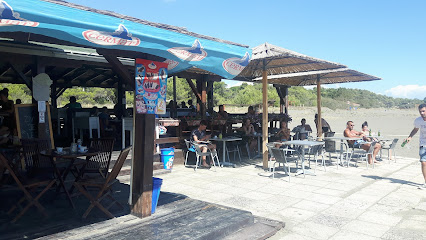
Piatto Loungebar - Ulcinj
Discover the vibrant atmosphere of Piatto Loungebar in Ulcinj, where stunning sea views meet delicious cocktails and lively entertainment.
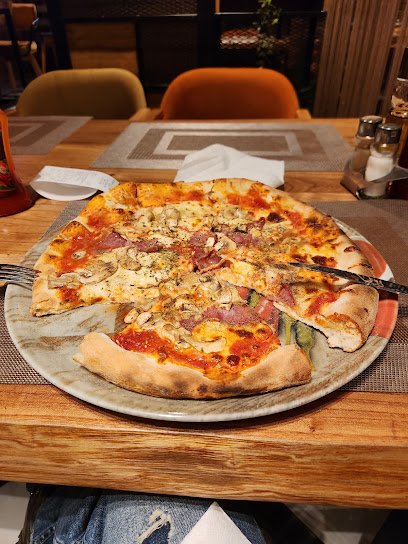
BAMBOLLA Lounge bar and Restaurant
Discover the vibrant flavors of Italy at BAMBOLLA Lounge Bar and Restaurant in Ulcinj, Montenegro – a delightful dining experience awaits.
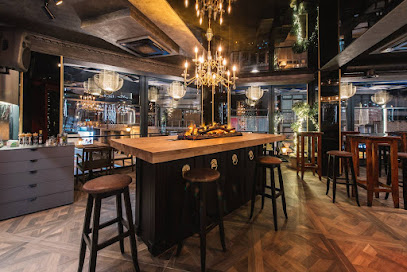
RIGO BAR
Discover Rigo Bar in Ulcinj, Montenegro—an inviting spot for cocktails, coffee, and vibrant local culture, perfect for unwinding and socializing.
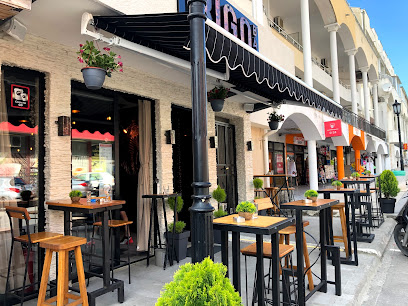
Lounge Bar Restoran “Domino“
Discover the rich flavors of Montenegro at Lounge Bar Restoran “Domino“ in Ulcinj, where Mediterranean cuisine meets vibrant atmosphere.
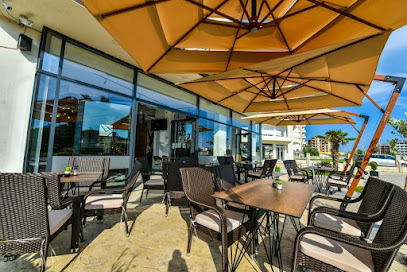
Evergreen Pub
Experience the vibrant atmosphere and authentic flavors at Evergreen Pub in Ulcinj, a must-visit for every traveler exploring Montenegro's stunning coast.

Big Ben Open Bar
Discover the vibrant nightlife at Big Ben Open Bar in Ulcinj, Montenegro – a perfect blend of culture, fun, and refreshing drinks.
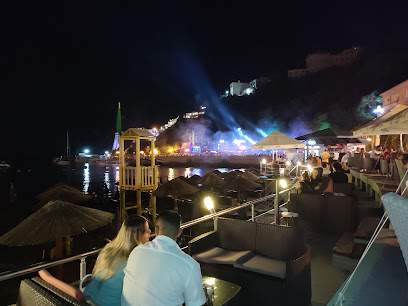
HEIST Bar
Discover the vibrant atmosphere of HEIST Bar in Ulcinj, Montenegro, offering delicious snacks and a perfect place to relax and socialize.
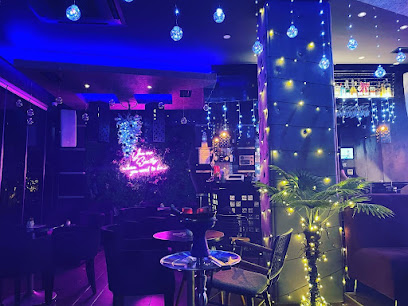
Pablo's Bar
Discover the relaxing vibe of Pablo's Bar in Ulcinj, Montenegro, where flavorful hookah and a welcoming atmosphere await you.
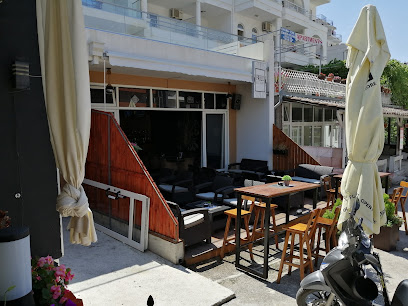
Local Phrases
-
- HelloZdravo
[ZDRAH-voh] - GoodbyeDoviđenja
[doh-vee-JEH-nya] - YesDa
[dah] - NoNe
[neh] - Please/You're welcomeMolim
[MOH-leem] - Thank youHvala
[HVAA-lah] - Excuse me/SorryIzvinite
[eez-VEE-nee-teh] - How are you?Kako si?
[KAH-koh see] - Fine. And you?Dobro. A ti?
[DOH-bro. ah tee] - Do you speak English?Da li govorite engleski?
[dah lee goh-VOH-ree-teh ENG-les-kee] - I don't understandJa ne razumem
[yah neh rah-ZOO-mem]
- HelloZdravo
-
- I'd like to see the menu, pleaseMolio bih meni, molim
[MOH-lee-oh bee meh-nee, MOH-leem] - I don't eat meatNe jedem meso
[neh yeh-dem MEH-soh] - Cheers!Živeli!
[ZHEE-veh-lee] - I would like to pay, pleaseŽelim da platim, molim
[ZHEH-leem dah PLAH-teem, MOH-leem]
- I'd like to see the menu, pleaseMolio bih meni, molim
-
- Help!Pomoć!
[POH-mohtch] - Go away!Idi odavde!
[EE-dee OH-dahv-deh] - Call the Police!Pozovite policiju!
[POH-zoh-vee-teh poh-LEE-tsee-yoo] - Call a doctor!Pozovite doktora!
[POH-zoh-vee-teh DOHK-toh-rah] - I'm lostIzgubio/la sam se
[eez-GOO-byoh/lah sahm seh] - I'm illBolestan/na sam
[BOH-leh-stahn/nah sahm]
- Help!Pomoć!
-
- I'd like to buy...Želim da kupim...
[ZHEH-leem dah KOO-peem...] - I'm just lookingSamo gledam
[SAH-moh GLEH-dahm] - How much is it?Koliko košta?
[KOH-lee-koh KOH-shta] - That's too expensiveTo je previše skupo
[toh yeh PREH-vee-sheh SKOO-poh] - Can you lower the price?Možete li spustiti cenu?
[MOH-zheh-teh lee SPOO-stee-tee CHEH-noo]
- I'd like to buy...Želim da kupim...
-
- What time is it?Koliko je sati?
[KOH-lee-koh yeh SAH-tee] - It's one o'clockJedan je sat
[YEH-dahn yeh saht] - Half past (10)Pola (10)
[POH-lah (DEH-seht)] - MorningJutro
[YOO-troh] - AfternoonPopodne
[poh-POHD-neh] - EveningVeče
[VEH-cheh] - YesterdayJuče
[YOO-cheh] - TodayDanas
[DAH-nahs] - TomorrowSutra
[SOO-trah] - 1Jedan
[YEH-dahn] - 2Dva
[dvah] - 3Tri
[tree] - 4Četiri
[CHEH-tee-ree] - 5Pet
[peht] - 6Šest
[shehst] - 7Sedam
[SEH-dahm] - 8Osam
[OH-sahm] - 9Devet
[DEH-veht] - 10Deset
[DEH-seht]
- What time is it?Koliko je sati?
-
- Where's a/the...?Gde je...
[gdeh yeh] - What's the address?Koja je adresa?
[KOH-yah yeh ah-DREH-sah] - Can you show me (on the map)?Možete li mi pokazati (na mapi)?
[MOH-zheh-teh lee mee poh-KAH-zah-tee (nah MAH-pee)] - When's the next (bus)?Kada je sledeći (autobus)?
[KAH-dah yeh SLEH-deh-chee (OW-toh-boos)] - A ticket (to ....)Jednu kartu (za ....)
[YEH-dnoo KAR-too (zah ....)]
- Where's a/the...?Gde je...
History of Ulcinj
-
Ulcinj, one of the oldest settlements on the Adriatic coast, was founded in the 5th century BC by the Illyrian tribe of the Olcinians. It was known as Olcinium. This ancient city became an important center for trade and piracy in the Mediterranean.
-
In 163 BC, the Romans conquered Ulcinj, integrating it into their vast empire. The city was known as Colchinium during this period and became a thriving Roman colony. Remnants of Roman architecture and infrastructure, such as roads and aqueducts, can still be found in the region.
-
Following the fall of the Western Roman Empire, Ulcinj came under Byzantine rule in the 5th century AD. The Byzantines fortified the city, and it became a crucial defensive outpost against various invasions. The influence of Byzantine culture and architecture is evident in the old town.
-
In the 15th century, Ulcinj fell under the control of the Republic of Venice. The Venetians fortified the city further and left a lasting impact on its architecture and culture. Venetian influence is visible in the old city's layout and in several surviving buildings.
-
In 1571, Ulcinj was captured by the Ottoman Empire. The Ottomans ruled the city for over three centuries, transforming it into a bustling trade center. The city became known for its diverse population and rich cultural tapestry, including influences from Ottoman, Albanian, and Slavic cultures.
-
During the Ottoman period, Ulcinj became infamous as a pirate haven. The city's strategic location made it a perfect base for pirates who roamed the Adriatic Sea. The legacy of piracy is still a point of fascination and intrigue for visitors today.
-
In 1880, following the Berlin Congress, Ulcinj was integrated into the Principality of Montenegro. This marked the end of Ottoman rule and the beginning of a new chapter in the city's history. Ulcinj continued to develop as a key coastal town within Montenegro.
-
Throughout the 20th century, Ulcinj saw significant changes, including periods of Yugoslav rule and the eventual independence of Montenegro in 2006. The city has grown into a vibrant tourist destination, celebrated for its rich cultural heritage and stunning Adriatic coastline.
-
Ulcinj is renowned for its multicultural heritage, which includes influences from its Illyrian, Roman, Byzantine, Venetian, and Ottoman past. The city's diverse population reflects this rich history, with a mix of Montenegrin, Albanian, and other ethnic communities contributing to its unique cultural landscape.
-
The Old Town of Ulcinj, known as Stari Grad, is a testament to the city's layered history. With its winding streets, ancient fortifications, and historic buildings, the Old Town offers a glimpse into the past and is a must-visit for anyone exploring the region.
Ulcinj Essentials
-
Ulcinj is located in the southernmost part of Montenegro, near the Albanian border. The nearest airport is Podgorica Airport, approximately 85 kilometers away. From Podgorica, you can take a bus or rent a car to reach Ulcinj. Alternatively, Tivat Airport, which is around 90 kilometers away, can also be used. Buses from major Montenegrin cities like Podgorica, Budva, and Bar frequently travel to Ulcinj. For those traveling by train, the nearest train station is in Bar, from where you can catch a bus or taxi to Ulcinj.
-
Ulcinj is a small town, and many of its attractions are within walking distance. For longer trips or to explore the surrounding areas, local taxis are available and relatively inexpensive. Public buses operate within the town and connect to nearby villages and attractions like Ada Bojana and Velika Plaza. Renting a car is also a convenient option, especially if you plan to explore the broader region.
-
The official currency in Montenegro is the Euro (EUR). Credit cards are widely accepted in hotels, restaurants, and shops. However, it is advisable to carry some cash, especially when visiting smaller establishments or markets. ATMs are readily available throughout Ulcinj, but it's a good idea to withdraw sufficient cash during the day, as some ATMs may run out of cash in the evening.
-
Ulcinj is generally a safe destination for tourists. However, like any travel destination, it is advisable to take standard precautions. Avoid walking alone at night in unfamiliar areas and keep an eye on your belongings in crowded places, such as markets and beaches. While Ulcinj does not have specific high-crime areas targeting tourists, it is always best to stay vigilant and aware of your surroundings.
-
In case of emergency, dial 112 for immediate assistance. The local police station and medical facilities are available in Ulcinj. It is recommended to have travel insurance that covers medical emergencies. For minor health issues, there are pharmacies in the town where you can purchase over-the-counter medications. The local hospital, Dom Zdravlja Ulcinj, provides basic medical services.
-
Fashion: Do dress modestly, especially when visiting religious sites. Avoid wearing overly revealing clothing. Religion: Do respect local customs and traditions. When visiting mosques, dress conservatively and remove your shoes before entering. Public Transport: Do be respectful and give up your seat to elderly passengers. Don't eat or drink on public transport. Greetings: Do greet people with a handshake. A smile and a polite greeting in the local language ('Dobar dan' for 'Good day') are appreciated. Eating & Drinking: Do try local delicacies and accept food offerings graciously. Don’t refuse hospitality, as it is considered impolite.
-
To experience Ulcinj like a local, visit the local markets where you can buy fresh produce and traditional Montenegrin goods. Engage with locals, as they are often friendly and willing to share stories about the town's history and culture. Don’t miss visiting the Old Town (Stari Grad), which offers a glimpse into the town’s rich history. For a unique experience, take a boat trip to Ada Bojana, known for its beautiful river delta and seafood restaurants.
Nearby Cities to Ulcinj
-
Things To Do in Bar
-
Things To Do in Lezhë
-
Things To Do in Budva
-
Things To Do in Podgorica
-
Things To Do in Cetinje
-
Things To Do in Kotor
-
Things To Do in Krujë
-
Things To Do in Tivat
-
Things To Do in Durres
-
Things To Do in Perast
-
Things To Do in Herceg Novi
-
Things To Do in Tirana
-
Things To Do in Bajram Curri
-
Things To Do in Kavajë
-
Things To Do in Nikšić












